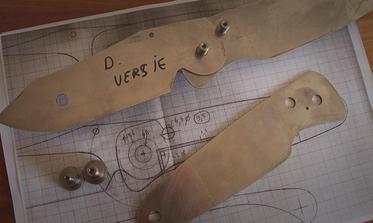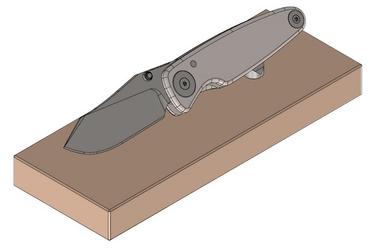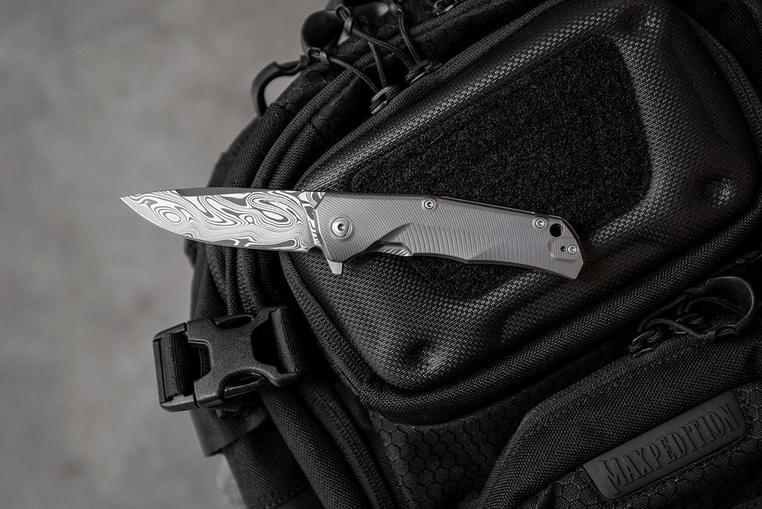The CNC milling of knives: Is it really that easy?
In the knife world the use of CNC-milling is becoming more and more common. Even small companies or custom knife makers know how to handle a CNC-machine these days. Does this also mean that the production of knives will be easier? Is it truly as simple as copying a piece of paper in a copying machine? Knivesandtools explains!
What is CNC-milling?
CNC stands for Computer Numerical Control. Simply put this means computer-controlled milling. You upload a program to a computer after which a milling machine cuts out a block of material until you have the parts you need.
This sounds simple, but in reality it is not. Because even though a CNC-machine can do a lot by itself, it still needs a lot of human help. And preparation. Mostly a lot of preparation.
What makes the CNC-milling of knives difficult?
Let's start at the beginning: the design of the knife. The design is not generated by a computer. A designer comes up with the design. A drawing program is used to come up with the shape, size and dimensions. This step is often preceded by a range of sketches and drawings on paper.
The result is a nice drawing, perhaps a digital 3D-model. This doesn't, however, mean that you have a drawing a CNC-machine can handle. This drawing needs to be converted for your specific CNC-machine. The machine needs to know which size cutters need to be used. A difference of one hundredth of a millimetre already ensures that a scale won't fit properly. For it the drawing is converted to a Gcode. A special language that bridges the gap between a drawing and milling.
Fixtures
In the next step you expect a block of steel, titanium or aluminium to be added to the CNC machine, after which it can get to work. That is unfortunately not the case. First you need to design and produce 'fixtures'. It is a type of base you need to secure the material, after which the milling machine can get to work. You cannot, after all, simply put a piece of titanium on a table and expect it to stay in place.
You cannot, after all, simply put a piece of titanium on a table and expect it to stay in place.
Developing such a fixture is a lot of work. It takes a lot of testing, adjusting, testing and adjusting before you get it right. This process is also rather expensive. Large solid blocks of aluminium are often used as a base. This aluminium alone is already really expensive. Especially when you discover after one test that the block that is worth a couple hundred dollars can directly be recycled.
Prototyping and milling bits
Were you able to produce a working fixture? If so it is time to start producing and testing prototypes with different tools. Used a milling bit too long? You will see it when you look at the finish of the tool. A part of the finish is therefore determined by how often the bits are replaced. A bit can be cheap, but also pretty expensive. Usually a bit is used for milling away material and another for the finish. Often another very fine bit carefully moves over the surface for that nice finish. Might take a lot of time, but it is definitely worth it.
Finish after milling
In the end you are left with all the parts that were cut out with a CNC-machine. Done? No. They now namely have a surface finish directly from the milling machine. As such you cannot avoid the fact that every part needs to be finished by hand. Sanding, sandblasting, satinizing: whatever the knife needs.
Cost of a CNC-machine
The CNC-machine itself also doesn't come for free. Modern CNC-machines that are used today can easily take you back 100.000 pounds. Sometimes even more, depending on what the machine can do. That amount will be the basis. This does not include the additional costs of the accessories and spare parts. Cost of items such as cutters and coolant. Maintenance. Costs of a CNC-operator that will control the machine, and its (additional) training.
Conclusion
So is it really that terrible working with a CNC-machine? Absolutely not. It is the only consistent way of shaping so many parts in 3D. And compared to cutting it out by hand with a saw, sharpening and milling parts it is, in most cases, even cheaper.
You do, however, need to know that it is definitely not cheap. And that it does require a great deal of craftsmanship. From drawing to fixture design and from prototyping to the actual production. It is not that simple.
Gough Custom Knives
To illustrate we have a nice video from Aaron Gough from Gough Custom Knives. He spent years optimizing the production of this signature model. We are talking about thousands of hours spend on one fixed knife with a sheath. In this video he clearly explains how CNC-milling works for him and you can see his machine in action.
Which brands are good at CNC-milling?
There are a couple of brands that are exceptional when it comes to milling work. True masters. Sometimes even award-winning. Examples are: WE Knife, LionSteel, Rick Hinderer Knives and Zero Tolerance.










